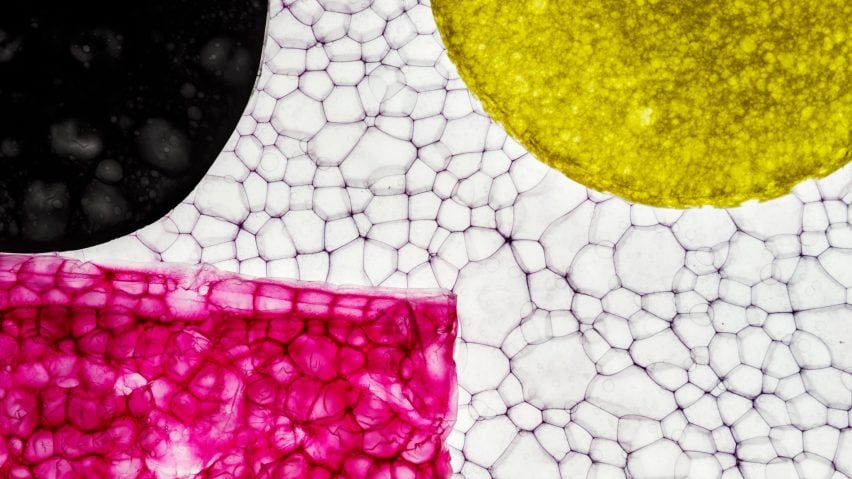A garment clad with iridescent wooden sequins is among the projects on display at the Designs for a Cooler Planet exhibition at Finland's Aalto University, demonstrating innovative applications of cellulose.
Designs for a Cooler Planet is an annual student exhibition at Aalto University, which kicks off during Helsinki Design Week each year and features projects that tackle sustainability in the design industry.
The university is known for encouraging its students to collaborate across disciplines – a tradition highlighted in the exhibition, where students studying arts and sciences have joined forces to push the boundaries of their research.
While a range of biomaterials feature in the show, the following four projects from Designs for a Cooler Planet are united in their use of cellulose, the dominant substance found in plant cell walls.
Helsinki Design Week concluded on Sunday, but the exhibition will remain on display at Aalto University until 3 October.
Shimmering Wood by Structural Colour Studio and Anna Semi
Noora Yau and Konrad Klockars of Structural Colour Studio collaborated with fashion designer Semi to create Shimmering Wood – iridescent solid wooden sequins made shiny by their nanocellulose, presented on a black garment.
Similarly to butterfly wings and peacock feathers, the "microscopically small" nanostructures formed by the cellulose create vivid colours when they interact with light.
The sequins do not contain toxic pigments, plastic-based materials or metallic foils, components typically used to create garments with shiny or glittering effects.
When creating the project, Yau sought to balance her lifelong love affair with bright colours with a desire to work with renewable materials.
"I didn't feel comfortable using these beautiful, shiny colours when they're created in the traditional way," Yau told Dezeen at the university. "There is such a huge need in the fashion industry for more sustainable colourants."
Bubbles with Benefits by Valentin Schwarz, Satu Paavonsalo, Juha Lipponen, Marke Tyrväinen, Ziba Fathi and Jenni Roivas
Bubbles with Benefits is a plant-based alternative to traditional plastic bubble wrap that does not lack any of the well-known material's cushioning properties.
The biodegradable cellulose-based wrap dissolves in water, meaning that it does not create any unnecessary waste, and can be finished in different natural dyes to "suit any brand's look".
"Without changes to the current practices, the global amount of plastic waste is forecasted to triple to over 1,040 million tonnes by 2060," said the designers.
Textile by Inge Schlapp-Hackl, Herbert Sixta and Michael Hummel
According to Aalto University, the estimated lifetime of a banknote is around three years before it is taken out of circulation. While polymer-based notes can be recycled, cotton-based notes are typically incinerated. Cotton is primarily composed of cellulose.
To tackle this waste, students Inge Schlapp-Hackl, Herbert Sixta and Michael Hummel have created a textile made from these surplus cotton banknotes. This was developed using Ioncell, a technology that converts cellulose into fibres "without harmful chemicals".
The textile owes its distinctive green colour to its former life as bank notes.
The Roots by Krista Virtanen, Saskia Helinska, Marja-Inkeri Murphy and Illona Valovirta
The Roots is a plant-based leather alternative made of wheatgrass roots, bound by nanocellulose and coloured with natural dyes, which was developed to minimise agricultural waste that would otherwise be composted.
Leftover wheatgrass, created by vertical wheatgrass farming, was salvaged to create the material that can be sewn together to create garments or bags and "feels pleasant to the touch", according to Aalto University.
Designs for a Cooler Planet takes place from 6 September to 3 October 2024 at Aalto University, Otakaari 24, 02150 Espoo, Finland. See Dezeen Events Guide for an up-to-date list of architecture and design events taking place around the world.

